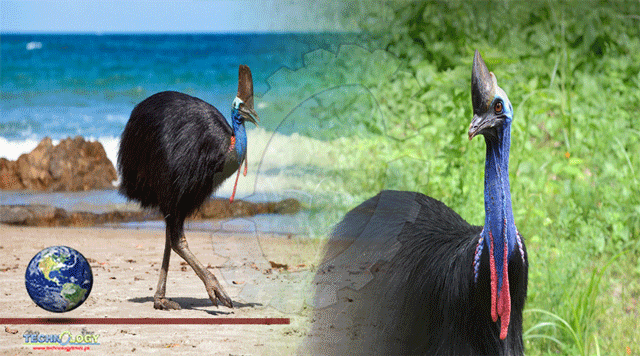When did someone think of an idiom which goes as, what came first chicken or egg? He never thought about the world’s most dangerous and fatal bird — the cassowary (Casuarius). A recent study indicates that the connection between human beings and cassowaries dates back to the late Pleistocene period — many thousand years before humans domesticated chickens and geese. “And this is not some minor fowl, ” lead research writer Kristina Douglass, an archaeologist at Penn State, explained in an article.

“It is a massive, ornery, flightless bird that can disembowel you — most probably, the dwarf species that weighs 20 kilos.” The experimenters think there was an intricate food-gathering method in ancient times. They also tried to evaluate the fossils of historical cassowary eggshells. Douglass and his international squad of investigators assumed that some 18,000 years ago, people in New Guinea were amassing, incubating — and probably raising — cassowary chicks. It affects the earliest comprehended proof of willful bird rearing.
Utilizing a mixture of 3D imaging, computer modeling, and egg morphology, the experts analyzed over 1,000 pieces of cassowary eggshells courting back between 6,000 and 18,000 years ago. “We tried that strategy to recognize whether or not there was any structure in terms of when people were farming cassowary eggs,” Douglass said to a news channel. “And we discovered that there was a structure and that people were farming eggs preferentially in the delinquent phases of growth.”
According to Douglass, humans would have saved these eggs for one of two motives: to consume them, or they might sometimes breed the hatched chicks for their flesh and feathers. In the later stages, fertilized eggs are famous street food in various East Asian and South Pacific nations — notably, the Philippines, according to a journal printed in 2019 in the Journal of Ethnic Foods.
Popularly recognized as balut, the dish is usually created with duck eggs today. However, Douglass and her crew say that people in New Guinea may have been consuming cassowary balut thousands of years ago.
Or, they may have been breeding cassowary chicks. Like geese, cassowary chicks trace on the first animal they notice, according to the University of Michigan’s Animal Diversity Web. University of Maine anthropologist Paul Roscoe says that this makes them oddly excellent for human farming, a method that starts again in portions of New Guinea to this day. However, Douglass and her squad did not find proof of historical people reproducing cassowaries because they intended to do in the future.
Cassowaries and their eggs are valuable reserves for New Guineans. In ancient times, cassowary tibiotarsus, the upper portion of the limb, was used to customize bone blades for hunting, as published in a research paper of Royal Society. Today, their feathers are treasured for decoration, and the birds stay a crucial basis of flesh. “Cassowary is quite a treat,” Roscoe confessed. According to vertebrate paleontology Darren Naish, a terrified or territorial cassowary can lash out with a strong force enough to disembowel a medium-size (or even human-size) mammal.
Originally published by Agence de presse D.I.A.